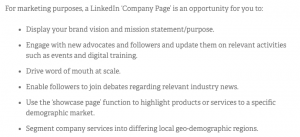Setting Up A Solid Analytics Practice With Data
During the last few years, technology used to capture data has evolved at a rate that continues unabated, helping businesses make smarter decisions, connect with consumers and become industry leaders. However, there is no point in collecting data if it has no meaning, has been captured using outdated methods or if you missed an opportunity to use it.
The challenge to businesses is real, and it’s a challenge that must be addressed if business want to understand their customers better and enhance their value proposition.
Here are three things you need to consider to set up a data-driven culture in your organization:
1. Shifting to a Self-Service Data Management Model
According to research by Gartner, businesses will use self-service data management platforms to create a data-driven culture throughout their organization.
Tired of slow turnaround, inflexibility and un-intuitive platforms, organizations are beginning to realize the benefits of self-service data analytics — tools that enable businesses to place data at the heart of their decision-making, optimization and operational efforts. These tools, combined with machine learning, offer valuable insights to customers and open up new business opportunities that simply would not be possible with traditional tools or raw data.
It is also time to reconsider your strategy with your first-party data, which can be made more effective, and actionable with platforms.
2. Working With the Right Data
Bad or invaluable data is dead data. In a perfect world, every piece of data captured would be useful in some way, and while this may not be feasible for most organizations just yet, it’s a great goal to aim for.
One of the biggest challenges for businesses today is that they are constantly bombarded with huge volumes of data from multiple sources. From social media to IoT sensors, this data needs to be collected efficiently, stored securely and accessed logically. This data needs to be accessed remotely by different users and applications.
A solid data analytics framework allows companies to deal with big and diverse data efficiently, giving them both panoramic and granular views of their business environment and helping them to make more informed decisions. Building your new framework may involve investment in new systems, it may involve combining first and third party data or overhauling your entire data collection process.
The bottom line is that if your data isn’t currently working hard to give you results, it’s time to address the problem.
3. Predicting and Optimizing Outcomes
You should have an idea about the expectation you have from the analytics practice post setup. What are the results you are looking for?
Hence, before you can start to build a data strategy, you need to identify your customers’ pain points as well as pain points across your organization. Are you looking to optimize your marketing with this data, or strategy, or operations, or expect to use it for multiple things. Once data points you in a particular direction, how will you act on it?
For example, if that last marketing campaign took a nosedive, you can use data to paint a picture, to tell you why that was and what you can do next time to improve customer experience.
Your data can tell you a lot. From irrelevant marketing to lack of information on your competitors’ consumers, but you need to know the questions you want it to answer.
Many organizations are at crossroads; either they ignore the data revolution and slowly become less relevant, or they define their business with data and take it forward with a solid and sustainable analytics strategy. There really is no middle ground. It’s time you choose the way forward for your organization.
(48)
Report Post




